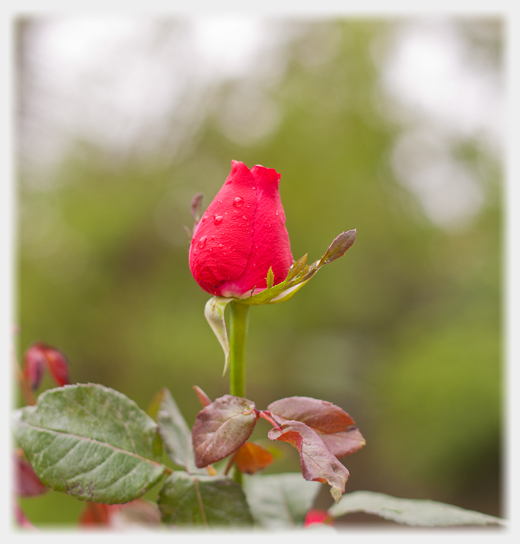
|
A Rose in Confusion
“No-one ...confuses the scent of the rose with the rose. Nor do you identify the scent of the rose with the molecules that come from it to stimulate olfactory receptors in our nostrils. It is obvious that the scent of the rose is neither the rose nor the molecules, but just the impression these create in your mind". So writes Gray expounding his comparator model in his book 'Consciousness'.
This theme of the way vision misleads us recurs at a number of points in Gray's book. Earlier he writes: “...we look out from our eyes, as through a perfectly clear and transparent window, on a world as it simply and really exists...all our visual perceptions, not just the demonstrably illusory ones, are constructed by the brain, remain inside the brain, and merely seem to form part of—are projected by the brain onto—a three-dimensional world (itself constructed by the brain) out there.” p.15
This description of human perception does not deny other creatures the right to form similar conceptions. But of that tree, for example, we cannot easily say if another species does or does not have a similar conception to our own, what we do know is that there is no ready made tree 'out there' waiting for humans or non-humans to happen upon; it is not as though a stage curtain had been drawn revealing to all the same set; a set which remains the same before and after the movement of the curtain.
He is arguing that from a neuropsychological viewpoint there is no reason to treat the sense of smell differently from that of vision: that the work of these sensory pathways, for the central nervous system, is functionally analogous. However much we might feel that we are looking at a stage set, and that our neighbours are doing the same, and that together we are all witnessing the same set in front of us, in fact we are all severally constructing the set using very similar systems to do so.
Maybe such construction does not warrant the word illusion, but it is more like an illusion than it is like an observation, as what seems to be in front of us is largely the creation of our minds. The differences between the senses comes when we process these sensations into perceptions. During this processing vision together with that model which we call reality, become inextricably entwined with language and thought. Vision is deeply related to language whereas smell is not and so is much easier to keep distinct.
The image of the rose is in our minds as surely as the smell. The image bears the same relation to the object, as does the smell. Both the smell and the image are used by us to place the rose in our conscious world, and this is a central task for human minds. They bring together various sensations so that we can perceive a single particular object with a location in space.
The link between the smell of the rose and the object we call a rose is highly complex. Hiding here are links between sense and perception, between perception and conception, between concept and language. But when we think of the sight of the rose, we easily pass over this complexity, not apprehending the way the elision of the visual and conceptual roses covers the differences between our daily world, the constructed world of human culture that values roses, and the hidden world of what there is when we are not. Vision persuades us these are one - as indeed in the end they must be. But it does so by feint not by insight.
References
- Title "A rose in Confusion" from Leonard Cohen (1984) 'Various Positions' Track: 'Heart with no Companion' "...For the mother in confusion /Her cradle still unfilled..."
- Romeo and Juliet II ii 43 "...O! be some other name: What's in a name? that which we call a rose By any other name would smell as sweet;..."
- Gray, J. A. (2004) Consciousness: Creeping up on the hard problem OUP ISBN 0-19-852 090-5. (p 58)
23rd December 2014 ~ 25th July 2015